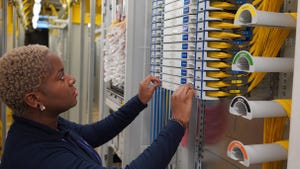
Interest in the next-generation 5G standard is rising quickly in the Indian market. Operators there hope to launch commercial 5G services by 2020, matching the pace of rollout in more developed markets. India's government is also taking steps to support 5G development. But even as India moves toward 5G, the local industry remains in financial difficulty, with huge debts constraining its investment capabilities.
Light Reading recently spoke with Amit Marwah, the head of marketing and corporate affairs at for the Indian division of Nokia Corp. (NYSE: NOK), to learn more about the 5G-related opportunities and challenges in the country.
Light Reading: Do you think the Indian government's vision to commercially launch 5G by 2020 is realistic?
Amit Marwah: I hope that we will not be left behind where adoption of 5G is concerned. I think we have made good progress in terms of 4G rollout and reach [coverage] and this is the right time for us to start planning for 5G. If by 2020 the entire regulatory framework happens in time then we should be in a position to do the first commercial rollout of 5G.
LR: What kind of regulatory support is required to support the development of 5G ecosystem in the country?
AM: The government has been very forthcoming and very progressive where 5G is concerned. The [recently launched] National Digital Communications Policy 2018 is a brilliant document to start with. Government has taken steps in the right direction. However, there should be consensus where it is win-win both for the operator as well as the government for the 5G spectrum, whether it is 3.5GHz or 28GHz band, as quickly as possible. The issue should be resolved at the earliest so the telcos get the spectrum fast and can focus on rollout. Further, the time from now till 2020 should be used to develop relevant use cases [because 5G is different for every country].
LR: What are the technology-related challenges Indian telcos are likely to face in their journey toward 5G?
AM: In 5G, if you try to find a use case and then make a business decision it is going to be very tough. As in the US, we have to adopt a different approach where 5G is concerned. They [the US] are trying to create supply and the demand should follow. In India we also have to be a little forward leaning. Networks need to evolve to 5G to improve lives. The other concern is on the spectrum side. There should be consensus between the government and the industry so the industry is not pushed into more debt.
From the Indian perspective, the biggest use case in 5G is going to be mobile broadband. Networks are choking, data consumption is increasing and in order to address this you need 5G. Early adoption is going to be in the fixed wireless segment followed by things like public safety and then low-latency applications like virtual reality, augmented reality and remote surgery.
Indian telcos are in a perfect position to upgrade and modernize the network. Because of the recent consolidation, the service providers are anyway working to combine their network assets, so it is an opportunity for them to modernize their networks to make them 5G ready.
LR: How is Nokia planning to garner a significant share of the 5G market?
AM: We believe we are in a very strong position as we are the only supplier with an end-to-end product portfolio, right from backhaul to radio network, which is going to be critical in 5G.
We have recently started manufacturing 5G New Radio equipment in India even though demand in the country is still some way off. This enables the creation of an ecosystem of 5G manufacturing. In our R&D center [in Bengaluru] there are teams working exclusively on 5G. Nokia is also working with the Indian stakeholders to gauge the unique requirements of the Indian market. We will then work with the 3GPP to include them in the standardization.
— Gagandeep Kaur, contributing editor, Light Reading
About the Author(s)
You May Also Like












